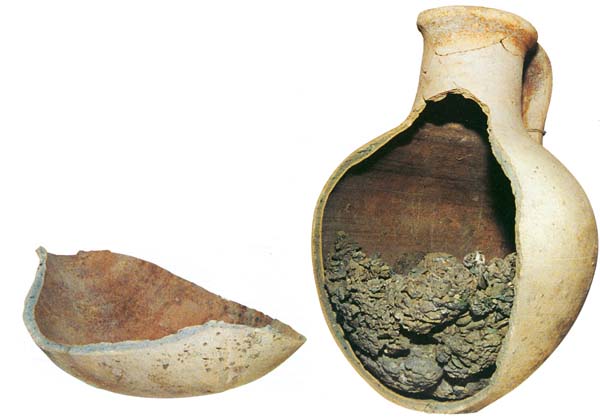Silver Hoard, 11th-10th century BCE
Among other things, the hoard tells us about the uses of money during this very early period—half a millennium before the introduction of coinage—when traders either bartered with each other or made payments with precious metals (gold or silver) measured by weight. Instead of the coin, the shekel was the unit of measure at this time.
The hoard probably belonged to a Phoenician merchant, who would have used the money to build and equip seagoing ships or to buy merchandise to be later traded in lands to the west.
Buried Treasure- The Silver Hoard from Dor, Ephraim Stern, BAR 24-04, Jul-Aug 1998.
See also-
- What Happened to the Cult Figurines? Ephraim Stern, BAR 15-04, July/Aug 1989.
- The Many Masters of Dor, Part 1, Ephraim Stern, BAR 19-01, Jan-Feb 1993.
- The Many Masters of Dor, Part 2- How Bad Was Ahab? Ephraim Stern, BAR 19-02, Mar-Apr 1993.
- The Many Masters of Dor, Part 3- The Persistence of Phoenician Culture, Ephraim Stern, BAR 19-03, May-Jun 1993.
- A Death at Dor, Andrew Stewart, BAR 19-02, Mar-Apr 1993.




